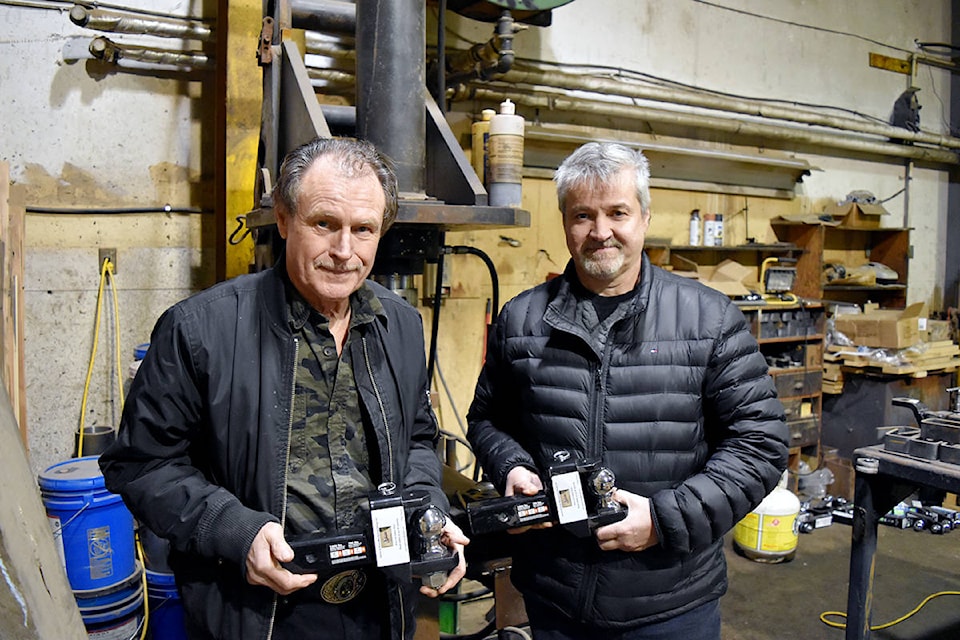Driving through Quesnel, George Jennex points out a ball hitch on the back of a pickup truck. It’s attached improperly, he says, launching into an explanation of the right way to attach a trailer hitch.
Jennex has spent a lot of time thinking about trailer hitches over the last year, since he first invented a prototype of a device intended to make the common ball hitch safer.
Just over a year on, Jennex has changed up his design and has a patent pending in Canada, and several other countries. He’s also in the process of starting up factories to reproduce his invention, with one small factory already started just outside Quesnel.
The Shur-Lok Safety Hitch was first conceived by Jennex, a machinist by trade, last year. Jennex has been inventing things ever since he was a kid, growing up on Cape Breton Island, in Nova Scotia.
Now in his retirement, Jennex has spent the last year perfecting the design of his most recent invention, building a small team to help him start a business, and creating a new website for his invention.
He’s also been reaching out to various provinces around the country, and has looked at setting up factories in Nfld. and N.S.
READ MORE: Quesnel inventor is making ball-hitch history
Jennex says the force of a trailer on a ball hitch can cause the ball to pop off — which can lead to very dangerous accidents — but his device provides a fail-safe downward pressure on the hitch, which locks the ball in place and prevents it from popping off.
Although he didn’t begin work on the safety hitch until he was in his early 70s, Jennex says he has had several close calls with trailer hitches in the past, which ultimately led to the creation of the safety hitch.
The most notable, he says, took place when he was driving with his family from Edmonton to Quesnel in 1968. He was towing a parts car behind him and driving down a steep hill. At the time, he was using a tow bar, which was still legal.
“Partway down, the hitch popped off the ball, the car I was towing went sideways, and although the chains held, the towed car was out of control. It smashed into my fender and pushed it sideways almost over the embankment,” says Jennex.
“I almost lost my wife and kids,” he says. “Once you get that scare — that’s crazy. You don’t know, [until] that happens, how much that puts fear in you, because your life is right there.”
He adds that people don’t realize not only is it their lives at risk when their trailer pops off, but it also endangers the lives of everyone in the oncoming vehicles as well.
“We have to get that out there and get it in the paper — make people more aware when they’re driving their trailers.”
Jennex and his team, made up of engineer Russell Stoltz and manager Pat Colbourne, have performed a number of stress tests on the device, but have not yet gotten CSA approval.
Getting the device CSA-approved can be a lengthy and expensive process, so they are waiting until they have earned enough from safety hitch sales to cover the costs before they begin.
But, says Jennex, “we don’t have a problem with selling them right now because we know they can’t fail. And we know they’ll save lives.”
With files from Annie Gallant.
